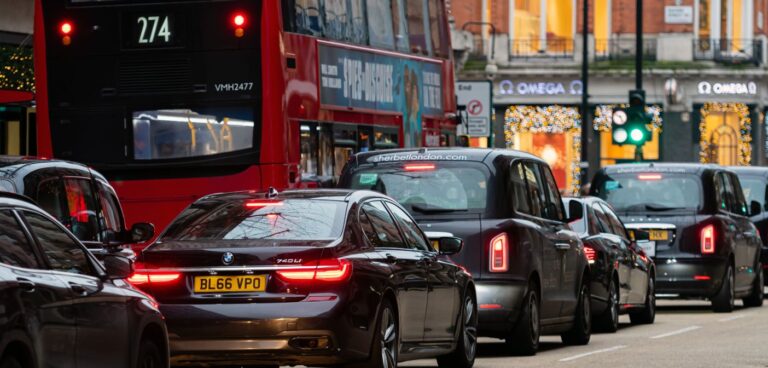Traffic on the UK capital’s roads reportedly costs London’s economy £5.1bn a year, or £1,211 per driver.
The claim was made by mayor of London Sadiq Khan, who warned that, unless efforts increase to deliver a sustainable recovery from the pandemic, the city could move from one public health and economic crisis to another, caused by polluted air and gridlocked roads.
According to road traffic statistics from the UK Department of Transport, car use has been the fastest mode of transport to recover to near-normal levels of use after each lockdown, with data showing it has been close to pre-pandemic levels for much of the latter half of 2021.
Furthermore, data from external providers shows that as the number of vehicle miles has increased, so too has the time lost by drivers to traffic. For example, TomTom data shows that in 2017 an average of 144 hours per year, per driver, were spent sitting in traffic – almost 20 minutes extra for a 30-minute trip during the evening rush hour.
In 2018, this increased to 147 hours, and in 2019, to 149 hours per year. This equates to six days and five hours in total for an average London driver. In 2020, traffic was much reduced, but Londoners still spent an extra 15 minutes per 30 minute trip driving because of congestion – 115 hours per year.
Inrix data shows a similar trend, with 148 hours lost a year by drivers on average in 2021. This is estimated to cost London’s economy £5.1bn a year, or £1,211 per driver, based on an estimate of the average value of earnings that drivers could be making, or the leisure time they could be enjoying, if they were not stuck in traffic. These trends are also reflected in Transport for London’s (TfL) traffic speed data.
According to Khan, the financial cost comes alongside significant health impacts, including increased risk of respiratory diseases and stunted lungs. Pollution reportedly leads to 4,000 Londoners dying early each year, all of which the mayor said increases the economic and resource burden on the health service.
“The cost to both Londoners and the capital cannot be underestimated, with days wasted stuck in traffic, billions lost to the economy and increased road danger and health impacts,” said Khan. “Most traffic is caused simply by there being too great a demand for limited street space, meaning the only long-term solution can be to significantly reduce car use in favour of greener means of travel.”
The overall active, efficient and sustainable mode share for travel in 2020 – the number of trips by walking, cycling and public transport, as a proportion of all trips – is estimated at 58.3% compared to 63.2% in 2019; showing that the key metric the mayor is trying to increase as part of his Transport Strategy has reduced by 5% over the pandemic, as a higher proportion of trips are now being driven.
This reduction is a result of a reported 14% drop in the share of trips made by public transport, which offsets a substantial increase witnessed in the share of trips made by walking or cycling – a rise of 9% in 2020. The reduction is also despite claims made by by Khan’s that more than a third of car trips in London could be walked in under 25 minutes and two-thirds could be cycled in under 20 minutes.





